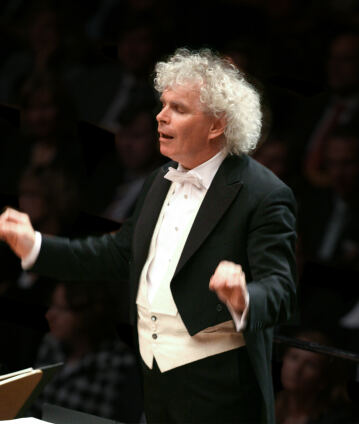Simon Rattle dirige les symphonies n° 3 et 4 de Brahms

Le cycle des symphonies de Brahms sous la direction de Simon Rattle a été le point fort de la saison 2008-2009 des Berliner Philharmoniker. Deux d’entre elles figurent au programme de ce concert : la Troisième et la Quatrième. Die Welt a salué l’interprétation en ces termes : « une apothéose extatique de ce qu’un jeu orchestral d’aujourd’hui, fondé sur la réactivité et la concision, peut produire à partir d’une œuvre devenue depuis longtemps un classique ».
Berliner Philharmoniker
Sir Simon Rattle
© 2008 Berlin Phil Media GmbH
Artistes
Nos suggestions
- Projet choral Héros Vocaux : « Aller-retour pour la Lune » d’Andrew Norman
- Europakonzert 2005 à Budapest avec Simon Rattle et Leonidas Kavakos
- Le « Voyage d’hiver » de Schubert avec Christian Elsner et Simon Rattle
- La « Passion selon saint Matthieu » de Bach avec Simon Rattle et Peter Sellars
- Simon Rattle conducts Schumann, Wagner, Ravel, Debussy and Ligeti
- Simon Rattle dirige la Quatrième de Chostakovitch